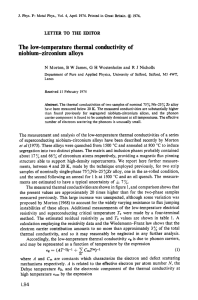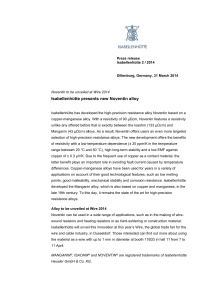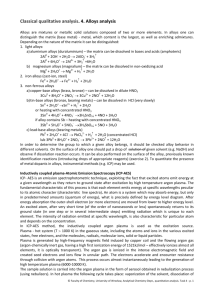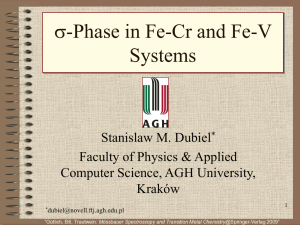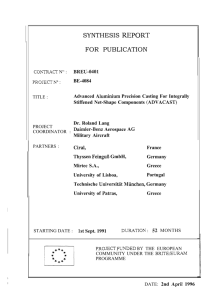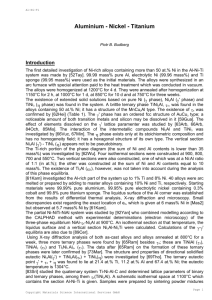GL6-S2 - Iramis
advertisement
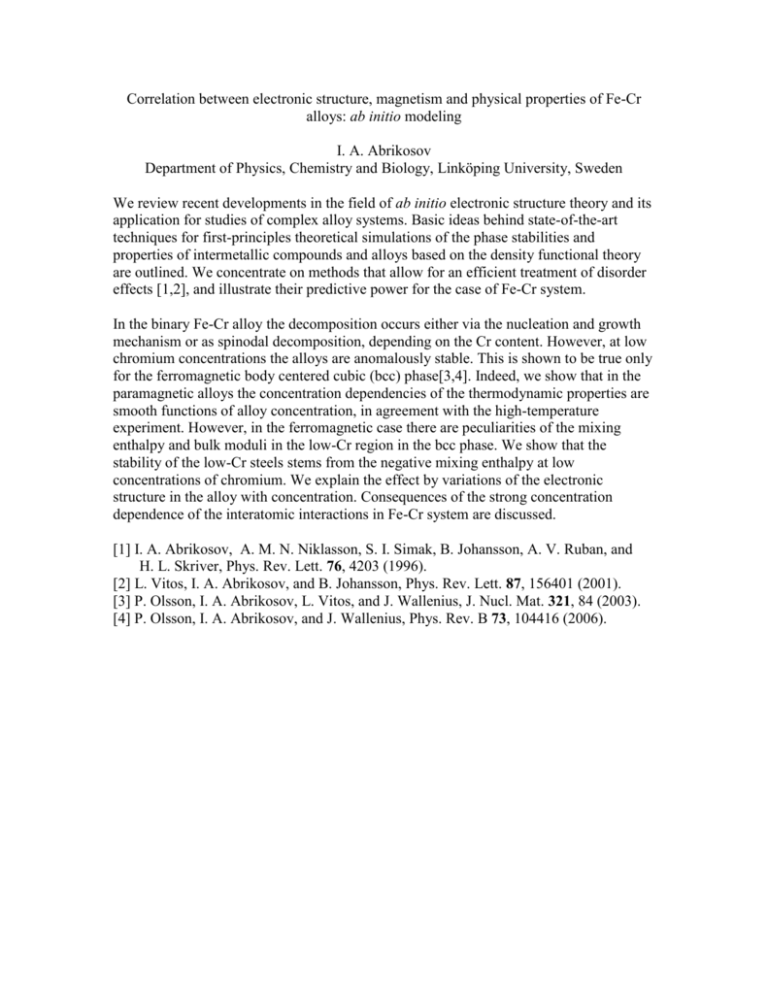
Correlation between electronic structure, magnetism and physical properties of Fe-Cr alloys: ab initio modeling I. A. Abrikosov Department of Physics, Chemistry and Biology, Linköping University, Sweden We review recent developments in the field of ab initio electronic structure theory and its application for studies of complex alloy systems. Basic ideas behind state-of-the-art techniques for first-principles theoretical simulations of the phase stabilities and properties of intermetallic compounds and alloys based on the density functional theory are outlined. We concentrate on methods that allow for an efficient treatment of disorder effects [1,2], and illustrate their predictive power for the case of Fe-Cr system. In the binary Fe-Cr alloy the decomposition occurs either via the nucleation and growth mechanism or as spinodal decomposition, depending on the Cr content. However, at low chromium concentrations the alloys are anomalously stable. This is shown to be true only for the ferromagnetic body centered cubic (bcc) phase[3,4]. Indeed, we show that in the paramagnetic alloys the concentration dependencies of the thermodynamic properties are smooth functions of alloy concentration, in agreement with the high-temperature experiment. However, in the ferromagnetic case there are peculiarities of the mixing enthalpy and bulk moduli in the low-Cr region in the bcc phase. We show that the stability of the low-Cr steels stems from the negative mixing enthalpy at low concentrations of chromium. We explain the effect by variations of the electronic structure in the alloy with concentration. Consequences of the strong concentration dependence of the interatomic interactions in Fe-Cr system are discussed. [1] I. A. Abrikosov, A. M. N. Niklasson, S. I. Simak, B. Johansson, A. V. Ruban, and H. L. Skriver, Phys. Rev. Lett. 76, 4203 (1996). [2] L. Vitos, I. A. Abrikosov, and B. Johansson, Phys. Rev. Lett. 87, 156401 (2001). [3] P. Olsson, I. A. Abrikosov, L. Vitos, and J. Wallenius, J. Nucl. Mat. 321, 84 (2003). [4] P. Olsson, I. A. Abrikosov, and J. Wallenius, Phys. Rev. B 73, 104416 (2006).


